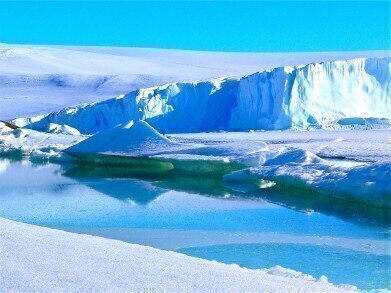Environmental laboratory
Scientists Attempt to Find Oldest Ice in Antarctica
Nov 30 2016
This month, a project involving 14 universities and 10 nations from all over Europe has set out to Antarctica in a bid to locate the oldest ice possible. Drilling into this ancient ice could reveal information about the fluctuations of our climate stretching back as far as 1.5 million years ago.
A frozen record of climate change
There are parts of our planet that are far older than humankind’s relatively brief existence on the Earth. What’s more, these parts have been affected minutely by the changes in atmosphere and environment around them, logging these fluctuations in their development and growth. Just as coral reefs can act as a natural archive of climate change, so too can the ice at the Earth’s poles.
The chemical makeup of this ice can provide information about the temperature of the planet at different time periods in history, while miniscule bubbles of air trapped inside can yield data about how many greenhouse gases (GHGs) such as carbon dioxide (CO2) have been present in the atmosphere in the past.
From this data, scientists hope to consolidate our existing knowledge on the subject and better predict how the climate will change in the coming years, decades and centuries.
“We’ve got a very good record of what’s been happening over the last 800,000 years but there are some aspects which we cannot fully explain,” explained Dr Robert Mulvaney of the British Antarctic Survey (BAS). “By studying ice that’s 1.5 million years old, it should give us the underpinning belief that we really do so deeply understand the climate system that we can be absolutely sure that what we’re projecting for the next few hundred years is based on a complete knowledge of the science.”
A multinational endeavour
The project is called Beyond Epica - Oldest Ice (BE-OI), so named for the Epica project conducted 10 years ago which drilled into the East Antarctic Ice Sheet and revealed information about the climate as far back as 800,000 years ago.
On that particular occasion, the study confirmed suspicions that atmospheric temperature fluctuated in tandem with carbon dioxide levels, raising awareness about the problem of manmade global warming and the need to reduce our carbon footprint. It also highlighted that ice ages have been occurring on approximate 100,000-year cycles, although that interval seems to drop to around the 40,000 mark the further back in time we delve.
This latest project seeks to shed further light on that discrepancy and add to our growing knowledge about the history of our planet’s climate, thus enabling us to better act in order to preserve its continued longevity. The following 14 research institutions from 10 different countries are involved in the endeavour:
- Alfred Wegener Institut Helmholtz Zentrum für Polar und Meeresforschung (AWI, Germany)
- Institut Polaire Français Paul Emile Victor (IPEV, France)
- Agenzia nazionale per le nuove tecnologie, l'energia e lo sviluppo economico sostenibile (ENEA, Italy)
- Centre National de la Recherché Scientifique (CNRS, France), Laboratoire de glaciologie et géophysique de l'environnement (LGGE)
- Natural Environment Research Council - British Antarctic Survey (BAS, United Kingdom)
- Universiteit Utrecht – Institute for Marine and Atmospheric Research (UU-IMAU, The Netherlands)
- Norwegian Polar Institute (NPI, Norway)
- Stockholms Universitet (SU, Sweden)
- Universität Bern (UBERN, Switzerland)
- Università di Bologna (UNIBO, Italy)
- University of Cambridge (UCAM, United Kingdom)
- Kobenhavns Universitet (UCPH, Denmark)
- Université Libre de Bruxelles (ULB, Belgium)
- Lunds Universitet (ULUND, Sweden)
However, conducting research in the hostile conditions of Antarctica is no mean feat, as the BAS well know from their experiments using tabletop electron microscopy. The initial aim this year is to locate a site with ice deep enough to provide records going back for a millennia and a half, but experts estimate it will take around a decade until the project comes to fruition.
“The previous project probably took us about 10 years from initially setting up where we wanted to drill to achieving the core,” said Dr Mulvaney. “It's a very remote location and very expensive to put people into. And we don't want to put all that effort and money into something if we're not pretty sure we're drilling in the right place.”
Digital Edition
AET 28.4 Oct/Nov 2024
November 2024
Gas Detection - Go from lagging to leading: why investment in gas detection makes sense Air Monitoring - Swirl and vortex meters will aid green hydrogen production - Beyond the Stack: Emi...
View all digital editions
Events
Jan 12 2025 Abu Dhabi, UAE
Jan 14 2025 Abu Dhabi, UAE
Jan 20 2025 San Diego, CA, USA
Carrefour des Gestions Locales de L'eau
Jan 22 2025 Rennes, France
Safety, Health & Wellbeing LIVE
Jan 22 2025 Manchester, UK



















